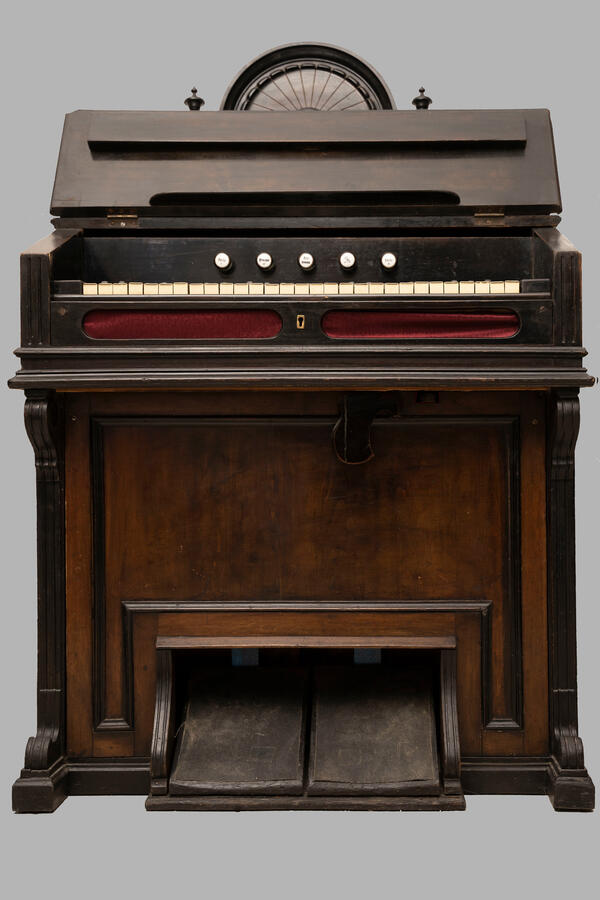The Germans living in Sarepta were Hernguters - representatives of a Protestant movement characterized by a focus on prayer and a communal nature of living. Music was of great importance to them. It accompanied all significant events in the spiritual life of the colonists and in their daily work.
The Sareptians sang religious songs during divine services in the church to the accompaniment of organ and piano-forte - a kind of piano. Brass instruments - French horns, flutes, horns, trumpets, trombones – were played on holidays, as well as string zithers and percussion timpani. A Musical College appeared in the colony in the second half of the 18th century.
Many guests of the colony describing the life of Sarepta inhabitants noted that there were musical instruments in almost every house. The physharmonica was also used for home music making and home prayers.
Physharmonica looks like a piano, but these musical instruments belong to different families. Hammers strike the strings and make sounds in the piano. And physharmonica is a reed keyboard instrument.
There are several shutters and pedals under the keyboard of the instrument. The peculiarity of the physharmonica is that it is controlled not only by the hands, but also by the legs and knees. The performer needs to press the foot pedals to pump air. And the dynamic tone of the sound is changed using the knee-operated flaps under the keyboard.
The physharmonica is traditionally made of wood. Its dimensions are up to 150 centimeters in height and 130 centimeters in width. Thanks to its five octaves, you can play any kind of music on this instrument and even improvise.
Many Sareptians subscribed to and brought from Europe sheet music and music magazines, collections of German and Swedish songs, works by Johann Gummel, Ludwig Beethoven, Johann Sebastian Bach, Felix Mendelssohn-Bartholdi and others. Some works of these great composers were performed in Sarepta for the first time in Russia.
The Sareptians sang religious songs during divine services in the church to the accompaniment of organ and piano-forte - a kind of piano. Brass instruments - French horns, flutes, horns, trumpets, trombones – were played on holidays, as well as string zithers and percussion timpani. A Musical College appeared in the colony in the second half of the 18th century.
Many guests of the colony describing the life of Sarepta inhabitants noted that there were musical instruments in almost every house. The physharmonica was also used for home music making and home prayers.
Physharmonica looks like a piano, but these musical instruments belong to different families. Hammers strike the strings and make sounds in the piano. And physharmonica is a reed keyboard instrument.
There are several shutters and pedals under the keyboard of the instrument. The peculiarity of the physharmonica is that it is controlled not only by the hands, but also by the legs and knees. The performer needs to press the foot pedals to pump air. And the dynamic tone of the sound is changed using the knee-operated flaps under the keyboard.
The physharmonica is traditionally made of wood. Its dimensions are up to 150 centimeters in height and 130 centimeters in width. Thanks to its five octaves, you can play any kind of music on this instrument and even improvise.
Many Sareptians subscribed to and brought from Europe sheet music and music magazines, collections of German and Swedish songs, works by Johann Gummel, Ludwig Beethoven, Johann Sebastian Bach, Felix Mendelssohn-Bartholdi and others. Some works of these great composers were performed in Sarepta for the first time in Russia.



